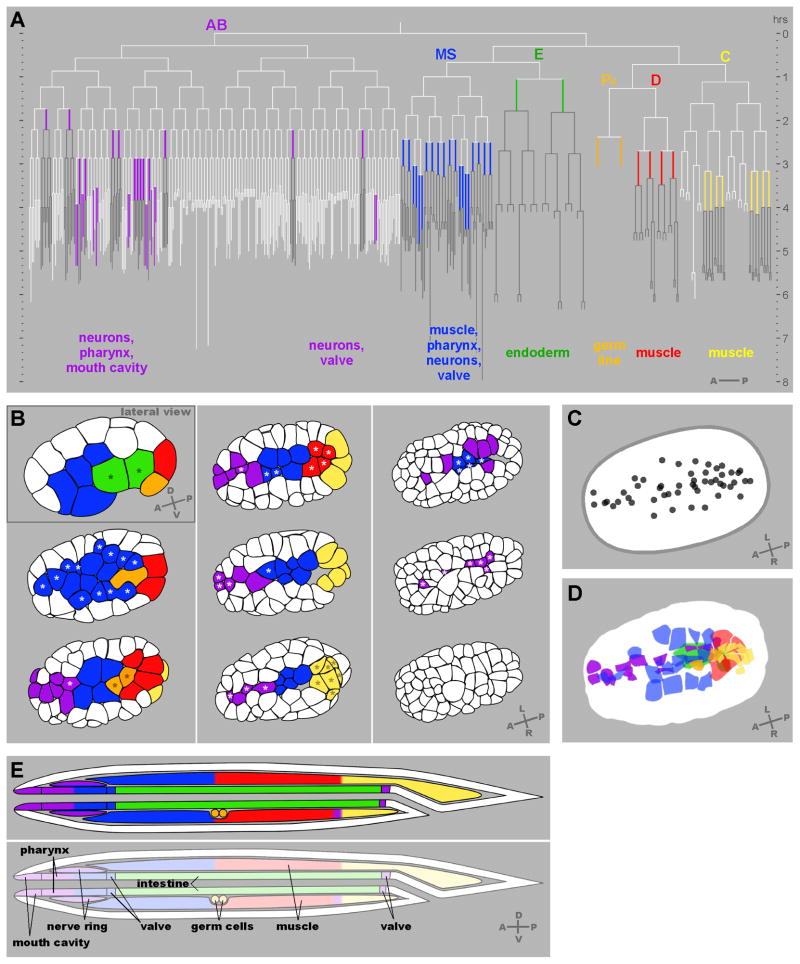Fig. 2. Gastrulation in C. elegans.
(A) The C. elegans embryonic cell lineage with the 66 gastrulating cells each represented in colors here and in (B,D,E) corresponding to the six traditionally-recognized cell lineages. Each vertical line represents a cell, with its length indicating its cell cycle period. Horizontal lines are cell divisions. The anterior daughter at each division is to the left, posterior to the right, as indicated on the lower right. Descendants of gastrulating cells, which generally remain internalized, are drawn in dark gray. Internal structures that each set of cells produces are indicated below. (B) The positions of the gastrulating cells. Renderings of cell outlines were generated from a spinning disk confocal film of a membrane-marked embryo viewed at a plane through the middle of the top layer of cells, adjusting to match the middle of the top layer of cells as cell divisions resulted in smaller and smaller cells. All views are ventral views except the first stage shown, a lateral view. Here and in the accompanying Movies 1 and 2 in the supplementary material, E, MS, P4, D and all of their descendants are colored from the time they are born. In the AB and C lineages, only some descendants gastrulate. For these lineages, we have colored the AB cells (in purple) only during the cell cycle at which each cell internalization occurs, and we have colored the C lineage (in yellow) at the birth of C, with yellow later marking only those C lineage cells that internalize. Nine embryonic stages are shown, with asterisks marking cells that are about to internalize (that internalize before the next stage shown). (C) The center of each cell’s apical domain is marked by a dot three minutes before its internalization was complete, from a ventral view, showing that most cells internalize from a position near the embryo’s ventral midline. 50 of the 66 cells (all but 16 of the AB lineage cells) could be seen internalizing from this view. (D) As in (C), except the entire apical domain is drawn. Endoderm was drawn here based on a separate movie. One cell of the 50 indicated in (C) is not represented in (D). This cell internalized by division toward the interior in this specific embryo. (E) Diagram of a hatched, larval worm (L1 stage, after Sulston et al., 1983) indicates contributions to internal tissues from each lineage.

